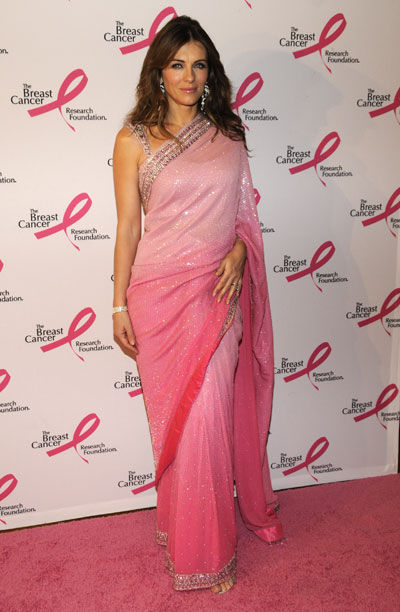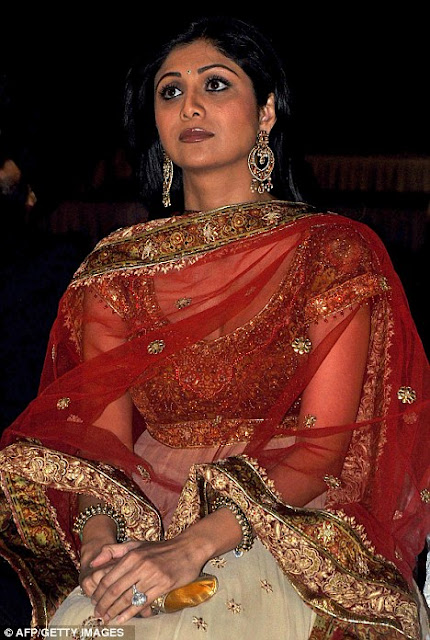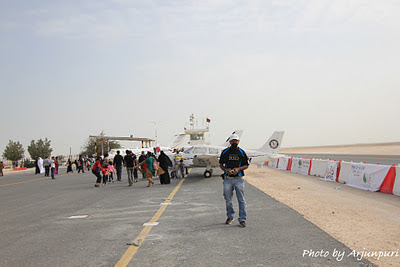Once again the Indian attire is in the news, not because of commoners, but because the western media has called Anarkali dress worn by Shilpa Shetty as saree. Even though many fashion designers from India keep saying that saree, our traditional garment, is one of the best known Indian outfits in the international fashion world, Daily Mail, a UK tabloid called Anarkali dress as saree!
On Friday, the tabloid carried an article on Bollywood actrress and former Big Brother winner, Shilpa Shetty, making her first post-pregnancy appearance. While the actor wore an off white and red Anarkali suit with a duppatta, the report called the garment a saree. The tabloid, unfortunately, failed to recognise the Indian outfit. ‘Shilpa Shetty’s sari shows off her baby bump’, read the headline.
The article also read: “The Bollywood actress glowed with expectant mum pride and she looked stunning in her beautiful sari, which showed off her baby bump.”
And funnily, people also started posting comments on the tabloid website about the faux pas. “That’s not a sari. It’s called an Anarkali,” posted ZB from India.
Another comment, posted by Zak, read, “Its Not a sari it’s a freakin anarkali dress (sic).”
Radh from London said: “Daily Mail, it is not a saree that she is wearing but in fact a 3 peice outfit called a 'Lengha'.” Then, Kudeza, also from London, said: “That's not a sari for a start! Anyway she looks gorgeous and definitely glowing.” And Kudeza goes on to explain the dress in another comment: “All those that are calling this a "Lengha" - You are all wrong too. A Lengha is a separate top + long skirt. What Shilpa is wearing is called an Anarkali Suit as the top is all one piece!!”
Shwetha Singh from Bangalore joins the debate and says: “Shilpa is wearing a traditional Indian Dress (Salwar Kameez- Anarkali Style) She is wearing salwar kameez There are many varieties of Salwar Kameez For Eg:- Patiyala Style, Plain A cut, Umbrella Cut, Chudi dar, Anarkali Style..... n many more....... so she is not at all wearing a saree.”
Indian designers feel that at a time when a global fashion giant like Hermes has come up with an exclusive sari collection and designers such as Jean Paul Gaultier have done their interpretation of the saree, such ignorance is amusing.
But is it really such a big deal? If given a thought, yes it is. There’s no wonder that Westerners get confused between an Anarkali and a Churidaar, but saree has been often worn by many global celebs!
Russian tennis player Anna Kournikova was dressed in a traditional Indian saree when she addressed a press conference in Lonavala, Mumbai.
Tennis players Serena Williams and her sister Venus Williams were in traditional Indian saree during a function on the eve of the WTA Bangalore Open Championship in Bangalore in 2008.
Russian tennis player Maria Kirilenko wore a saree during a photo shoot at the Sunfeast Open 2007.
Serbian tennis player Jelena Jankovich was in traditional Indian saree during a function on the eve of the WTA Bangalore Open Championship in Bangalore in 2008.
Tennis player Daniela Hantuchova of Slovakia wore an Indian saree during the 2007 Sunfeast Open in Kolkata.
Paris Hilton had even done a cover shoot in a saree.
Russian tennis player Maria Kirilenko wore a saree during a photo shoot at the Sunfeast Open 2007.
Serbian tennis player Jelena Jankovich was in traditional Indian saree during a function on the eve of the WTA Bangalore Open Championship in Bangalore in 2008.
Tennis player Daniela Hantuchova of Slovakia wore an Indian saree during the 2007 Sunfeast Open in Kolkata.
Paris Hilton had even done a cover shoot in a saree.
Actress Liz Hurley attended The Breast Cancer Foundation's Hottest Pink Party at The Waldorf Astoria in New York City, in a beautiful saree.
Ashley Judd, YouthAIDS Global Ambassador, was in a saree at the YouthAIDS Gala: Faces of India at the Ritz-Carlton, Virginia.
R&B quintet Pussycat Dolls walked the red carpet at Conde Nast Media Group’s 4th Annual Fashion Rocks in a black saree designed by designer Rocky S.
Supermodel Naomi Campbell walked the runway in a saree at the Mai Mumbai show at Lakme India Fashion Week Autumn/Winter 2009 at Grand Hyatt.
Ashley Judd, YouthAIDS Global Ambassador, was in a saree at the YouthAIDS Gala: Faces of India at the Ritz-Carlton, Virginia.
R&B quintet Pussycat Dolls walked the red carpet at Conde Nast Media Group’s 4th Annual Fashion Rocks in a black saree designed by designer Rocky S.
Supermodel Naomi Campbell walked the runway in a saree at the Mai Mumbai show at Lakme India Fashion Week Autumn/Winter 2009 at Grand Hyatt.
 | |
| Anna Kournikova in saree |
 |
| Serena Williams and Venus Williams in saree |
 |
| Jelena Jankovich in saree |
 |
| Jelena Jankovich in saree |
 |
| Paris Hilton in saree |
 |
| Liz Hurley in saree |
 |
| Pussycat Dolls in saree |
 |
| Ashley Judd in saree |
 |
| Naomi Campbell in saree |
Not just these, even Anjelina Jolie, Eva Mendes, Gisele Bundchen, Pamela Anderson, Tania Zaetta, Nicole Scherzinger, Madonna, Dame Helen Mirren, Ashley Judd and others were bewitched by this Indian outfit and appeared in some beautiful sarees on some occasions.
 |
| Angelina Jolie in saree |
 |
| Madonna in saree |
 |
| Eva Mendes in saree |
 |
| Tania Zaetta in saree |
 |
| Gisele Bundchen in saree |
 |
| Nicole Scherzinger in saree |
 |
| Helen Mirren in saree |
 |
| Pamela Anderson in saree |
Ok, leaving that apart and justifying their ignorance, we can just pardon them by saying even we cannot tell which is an Abaya and which is a Burqa. But will that justify it?



































